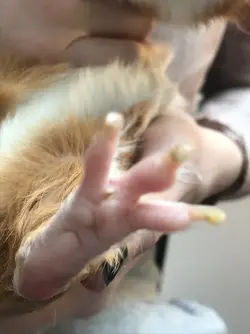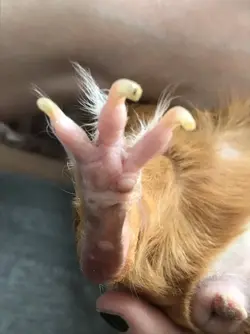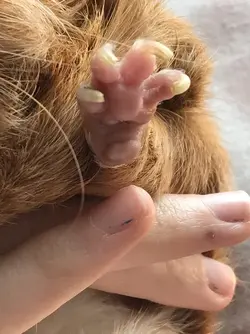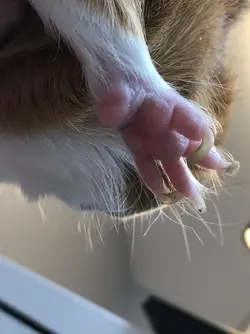hi there, i have noticed my piggy dennis has these weird squishy bumps on all his feet (photos below) i am concerned it is the start of bumblefoot. i would really like some help. (i am aware his nails are very long i just trimmed them don't worry haha!). if it is i don't know how it would of happened as i do not use sawdust only fluffy bedding and hay. help would be appreciated thank you!







